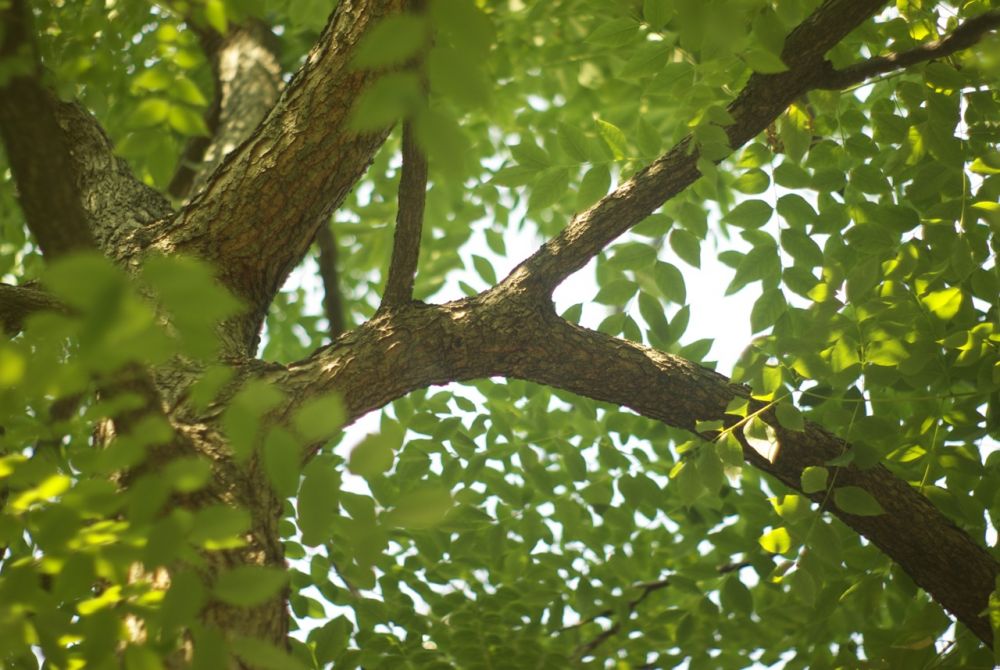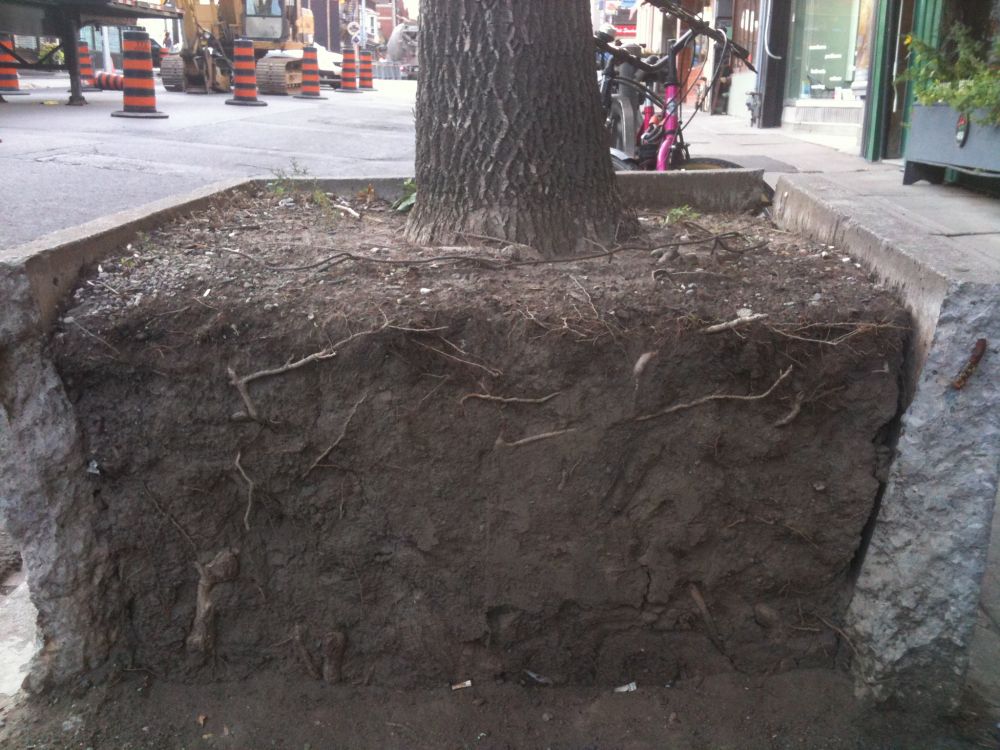Read more from the Spreading Roots conference
How can a tree grow, absorb water and nutrients, and hold itself up without them? We all know they exist, but we often forget just how important roots are. Forgotten or not, they are an essential part of a tree's anatomy. When they have enough room to expand to their full potential, the canopy will grow (given there is enough above-ground space and sunlight.) At the same time, if a tree's roots are constricted - by sidewalk or a roadway - there will be a limit to its top growth. How often do we make this connection?

Tree coffin has become my favourite expression to describe the square, above-ground boxes where you often find street trees planted. There may only be a single cubic meter of very compacted soil (think of the soil under a densely compressed dirt road) supporting a tree with the potential to be 40 feet or taller. These confined trees usually only thrive for a couple of years, becoming gnome-like before they begin to decline. The poor quality soil, along with many of the additional stresses urban trees face, makes for a pretty grim situation.

At Cornell University, Bassuk studies the relationship of soil space, soil compaction, roots, and canopy growth. Her findings suggest that there are ways to help street trees obtain the space, water and nutrients they require, such as structural soil (a mix of soil and crushed stone) and porous asphalt where rainfall can seep into the soil below. Another technique I found interesting is increasing the green space adjacent to street trees, allowing roots to grow under the pavement and reach the available soil.
Perhaps the most important message I got from her talk was that we as urban dwellers and our urban planners could benefit from a bit of a mind shift. Instead of the common trend that adds trees to an urban landscape last, trees need to be part of the plan from the beginning. We need to stop focusing solely on grey infrastructure and move towards innovative examples of green and grey infrastructure can working together to make our cities more livable. Can you think of an example of green and grey infrastructure in your neighbourhood or urban planning that puts trees first?
